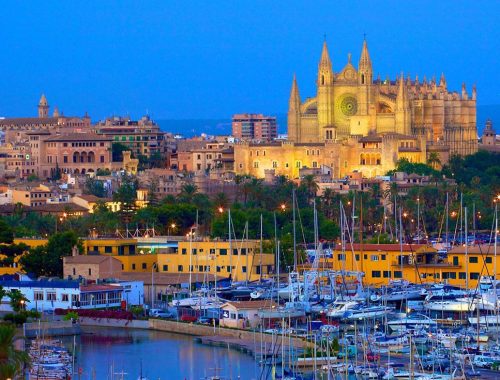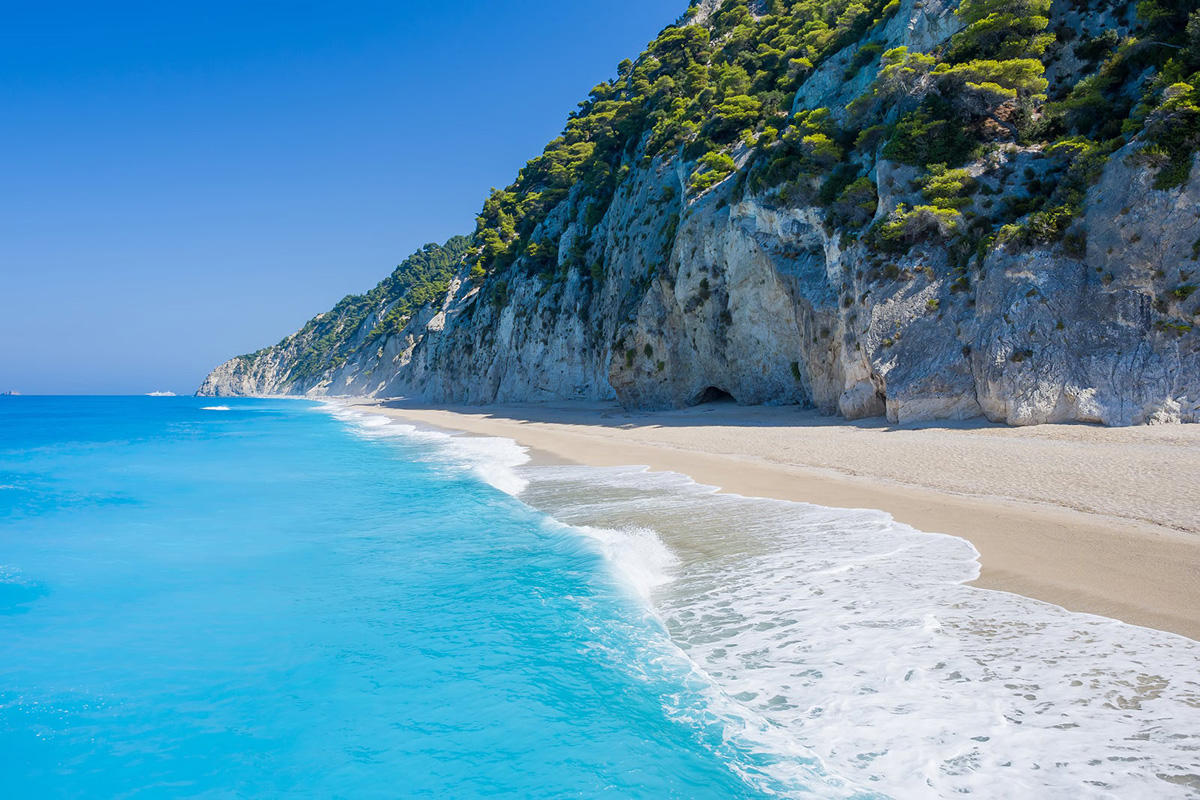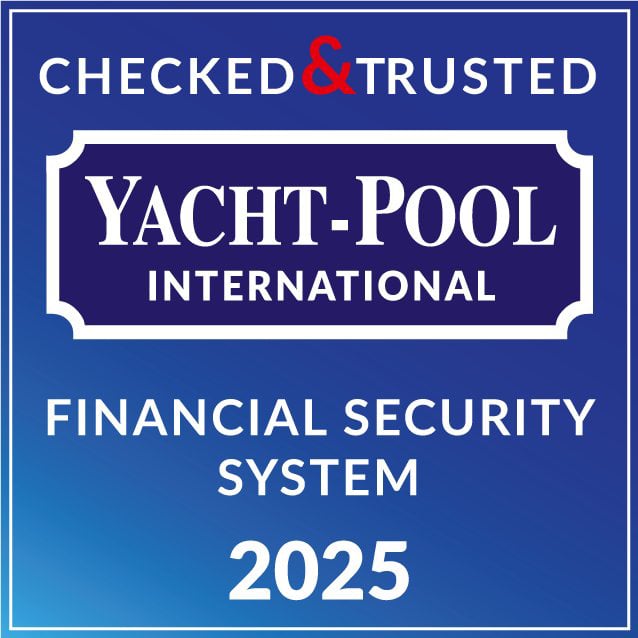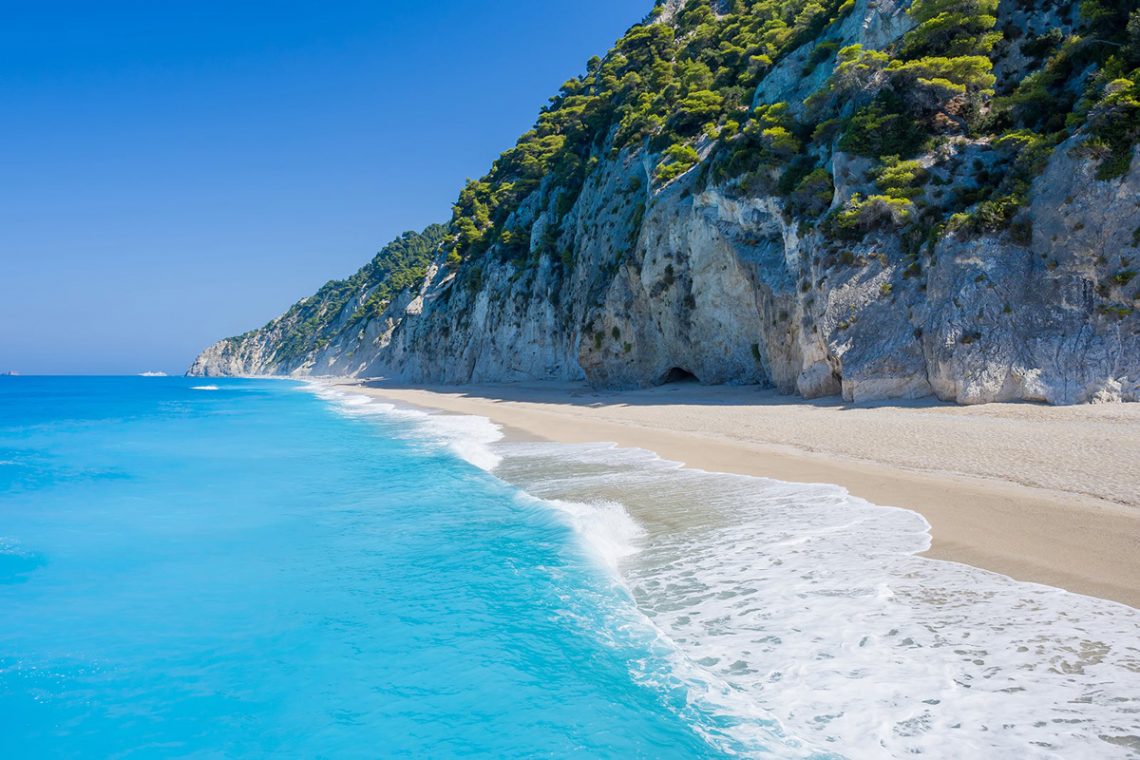
Sailing the Ionian Islands: Lefkada, Ithaca, Kalamos and Meganisi
The Ionian Islands of Greece are rightly considered by sailors a true paradise of natural beauty, history, and authentic Greek atmosphere. Once called the “Eptaneso,” the Ionian Islands form an archipelago made up of seven main islands and a multitude of smaller ones and islets — destinations sought after by the international jet set, like Skorpios, or deserted havens for those in search of peace and solitude. On this journey, we will focus on four of these islands: lively Lefkada, Ithaca — the island of Ulysses’ myth — and the wilder Kalamos and Meganisi.
The islands are quite close to one another, and in these waters the weather conditions are almost always favorable, allowing for relatively short and calm passages.
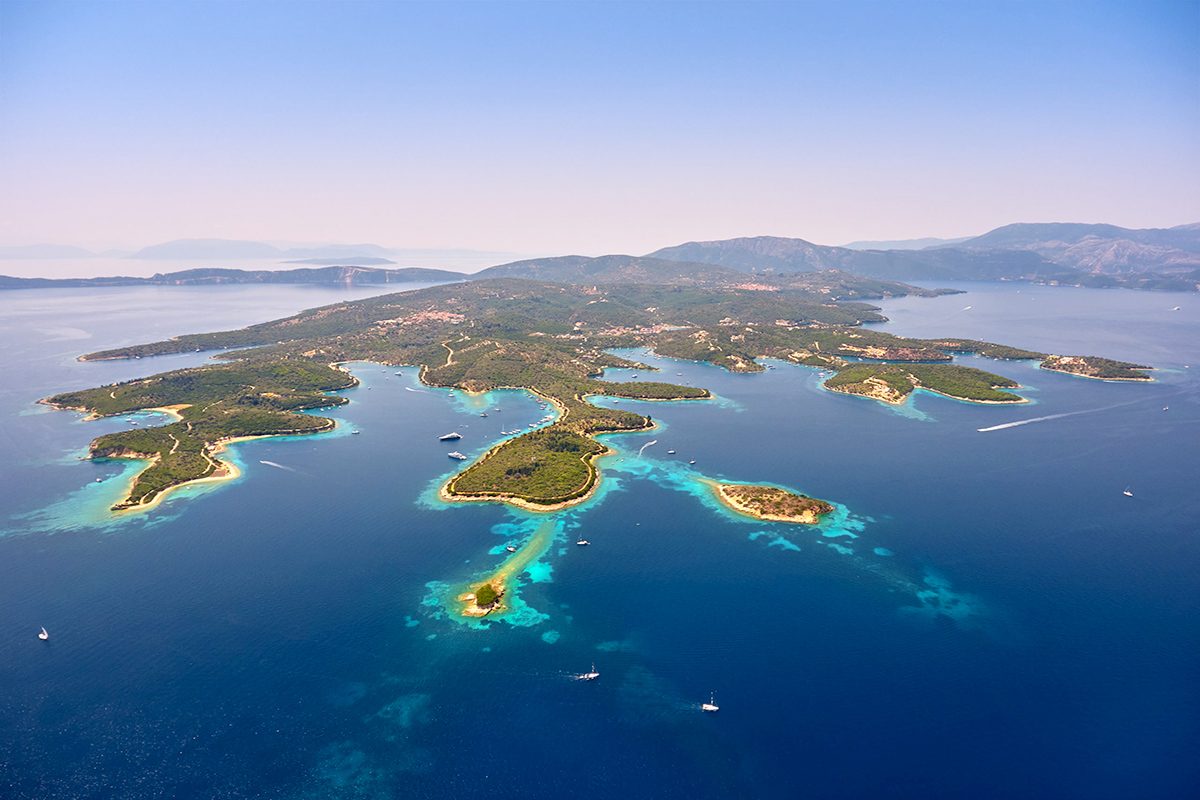
Day 1, Palairos, boarding
The nautical base for our Ionian Greece cruise is Palairos, a beautiful fishing village just a few kilometers from Preveza Airport. Overlooking the Ionian Sea, it features an excellent marina right next to the historic center. After settling on your yacht, there will be plenty of time to explore the village and enjoy a delicious dinner featuring traditional Greek cuisine.
Palairos feels like an isolated Greek island, but in reality, it is on the mainland, surrounded by some of Greece’s most remarkable islands, including Kastos, Kalamos, Skorpios, Meganisi, and the Ionian island of Lefkada. Nearby, there are other traditional villages such as Pagonia, small sandy beaches, and hidden coves, up to the renowned seaside resort of Mytikas. In the evening, a walk along the waterfront offers a lively atmosphere with restaurants, tavernas, and cafés.
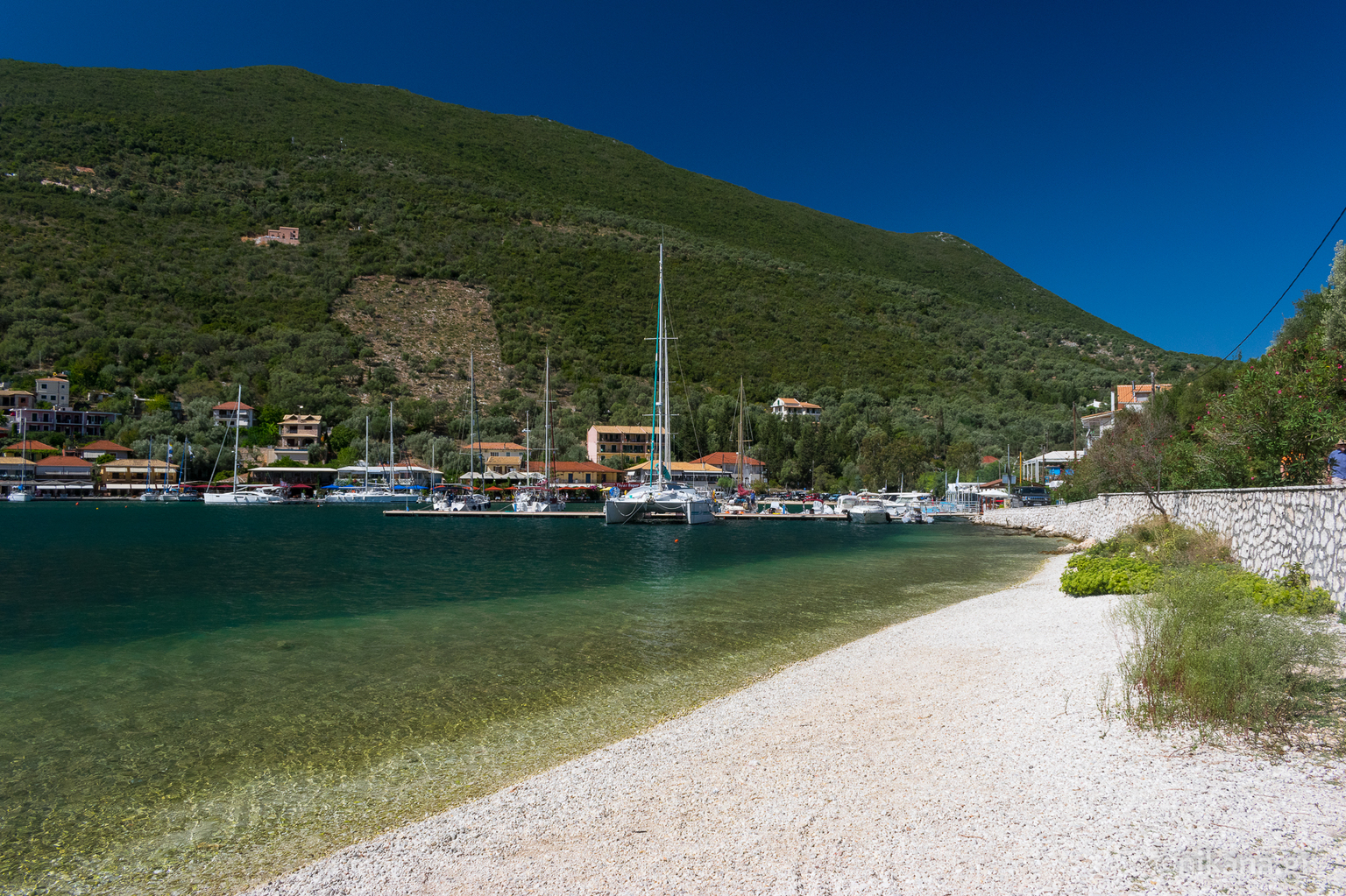
Day 2, Palairos – Sivota (Lefkada), 14 nautical miles
The moorings are finally cast off, and the bow is set toward Sivota on the island of Lefkada. Sivota is a picturesque fishing village that over time has become a popular tourist destination. It boasts an enchanting bay surrounded by green hills, small islets reminiscent of Norwegian fjords, pristine beaches, crystal-clear waters, and a marina that attracts sailors from all over Europe every year.
From the charming harbor, full of bars, restaurants, and tavernas where the fish is always fresh, you can set off on numerous excursions. There are countless beaches to suit all tastes. The most beautiful ones include Mega Ammos, Mikri Ammos, and Bella Vraka. There are also several small coves accessible only by sea, perfect for anchoring. Among them, the most famous — and well worth a visit — is Piscina Beach.
Also worth visiting are the Meteora Monasteries and the Acheron River National Park, ideal for rafting and hiking or horseback riding.
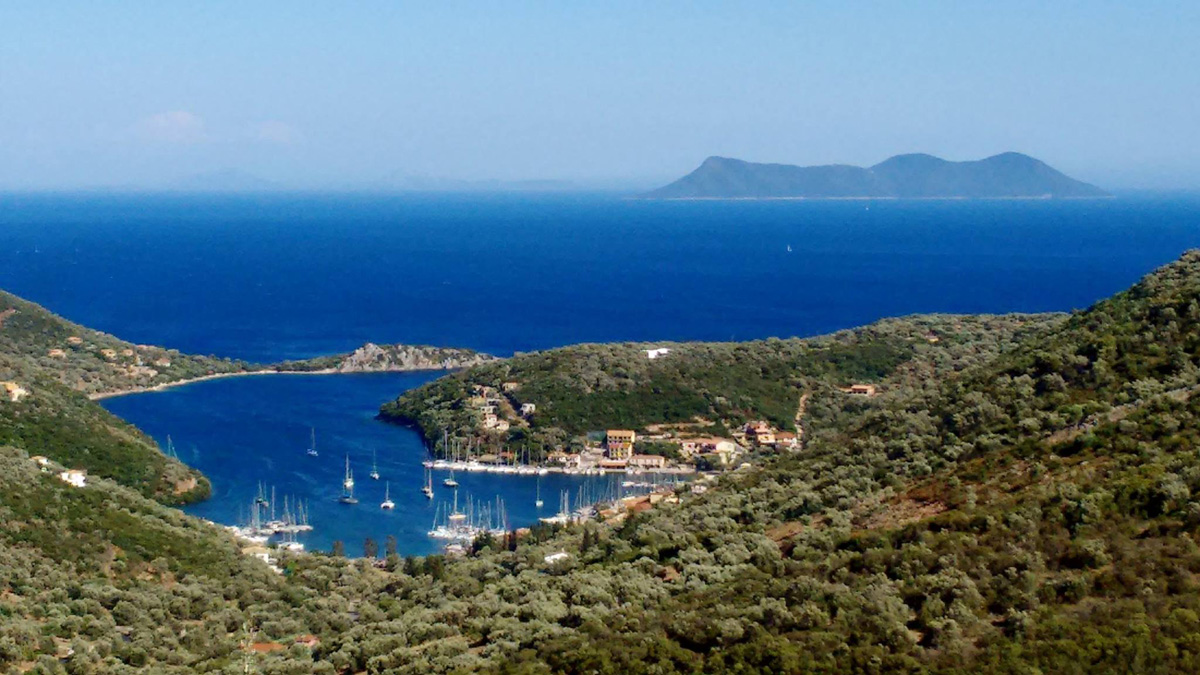
Day 3, Sivota (Lefkada) – Kioni (Ithaca), 15 nautical miles
We set off once again in the Ionian Sea, heading for Kioni on the island of Ithaca. This picturesque fishing village is located on the northeastern coast of the island, in a small bay open to the east and surrounded by pine, olive, and cypress trees. Approaching from the sea, the bay is marked by the southern headland, which features visible ruins and three windmills. Depths at the bay’s entrance are around 10–12 meters, and Kioni’s harbor offers excellent shelter from prevailing north and northwest winds, while strong easterly winds can be a bit challenging. All nautical services are available, including fuel, which can be supplied from the nearby station. Bars, tavernas, restaurants, and small shops complete the offer. For anchoring, the southern side of the bay has some coves with good sandy and seaweed bottoms, 6–10 meters deep, where mooring lines can be brought ashore. The only drawback is that these anchorages are quite exposed to strong northern winds.
Kioni is considered the most beautiful village on Ithaca. The village descends in an amphitheater from Rachi down to the sea, with charming houses featuring colorful roofs, whitewashed courtyards full of flower pots, narrow paved streets, and steps built into the lush hills. In the 16th century, the population living in the mountains of Anogi founded this village to gain access to the sea. Few houses survived the 1953 earthquake, and today Kioni is one of the most popular cruising destinations in the Ionian Sea. At the top of Rachi is the Evangelistria Church, built at the end of the last century, with a very interesting iconostasis. Descending toward the harbor, you can admire the Church of Agios Ioannis, with its carved wooden iconostasis.
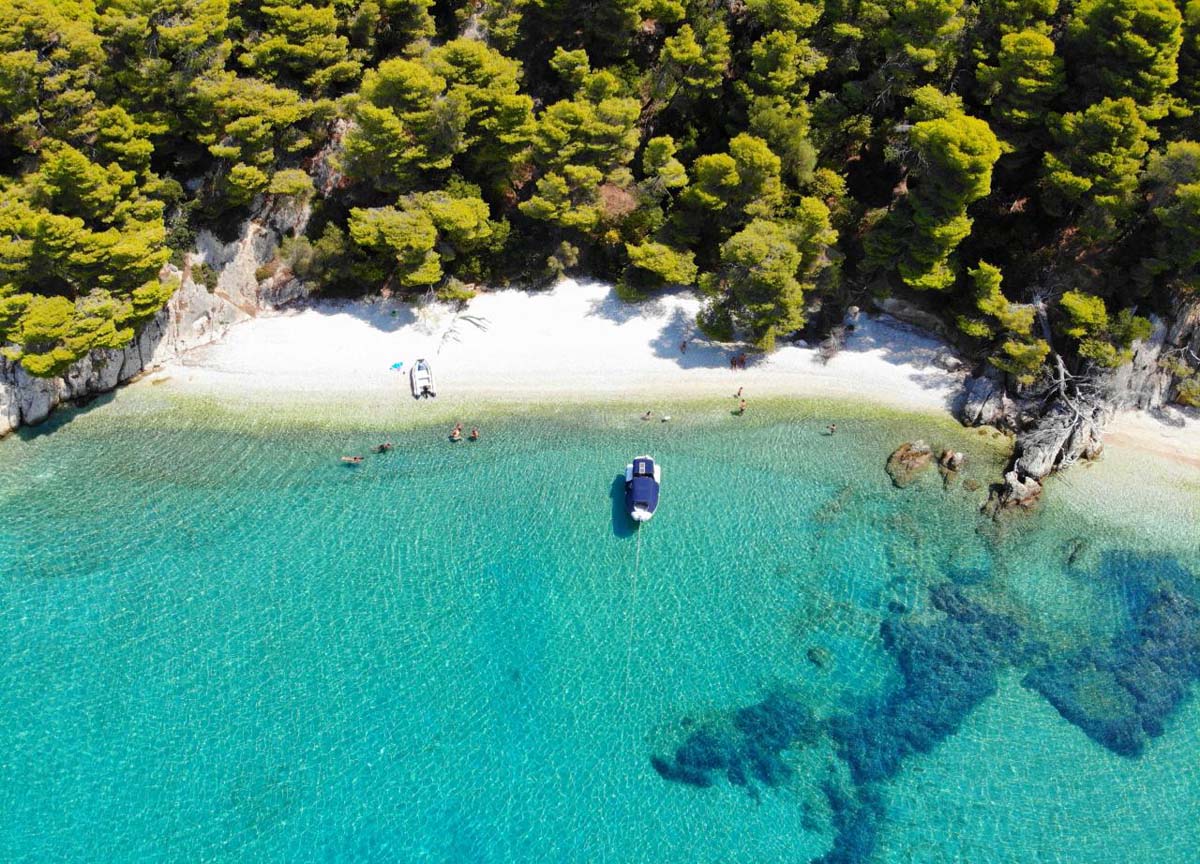
Day 4, Kioni – Vathi (Ithaca), 5 nautical miles
It’s time to explore another unmissable village on Ithaca: Vathi, the island’s capital, located at the end of a wide, sheltered cove shaped like a “mushroom.” The bay, open to the northwest, provides good shelter from northern winds but can be subject to strong gusts. It is recommended to lower sails near the entrance and head to the harbor using the engine. There is an interesting inscription in the harbor that all sailors can read: “Every traveler is a citizen of Ithaca.”
Boats usually moor at the west pier, which offers about 20 berths and is marked with yellow lines; vessels can berth either bow or stern to. The bottom is a mix of seaweed and mud, 3.5–4 meters deep, with decent holding.
Another option is to moor directly in front of the village, in the center of the bay, where the depth is 10–15 meters and the anchor holds well. A third option is a small pier about half a mile from the village, at the eastern end of the harbor bay — a sort of small horseshoe-shaped basin that can accommodate another 15 boats.
Vathi is made up of a cluster of beautiful houses with brown roofs overlooking crystal-clear waters. The Archaeological Museum, which houses interesting Mycenaean remains, mainly votive objects and vases, is worth a visit. Next to it is the Library, which displays numerous editions of Homer’s works, including a rare Japanese edition from the 1600s. Nearby is the Folklore Museum, with exhibitions on the local way of life. The island also offers many hiking trails that lead to the mythical ruins of Odysseus’ legendary palace and provide extraordinary views from the hilltops.
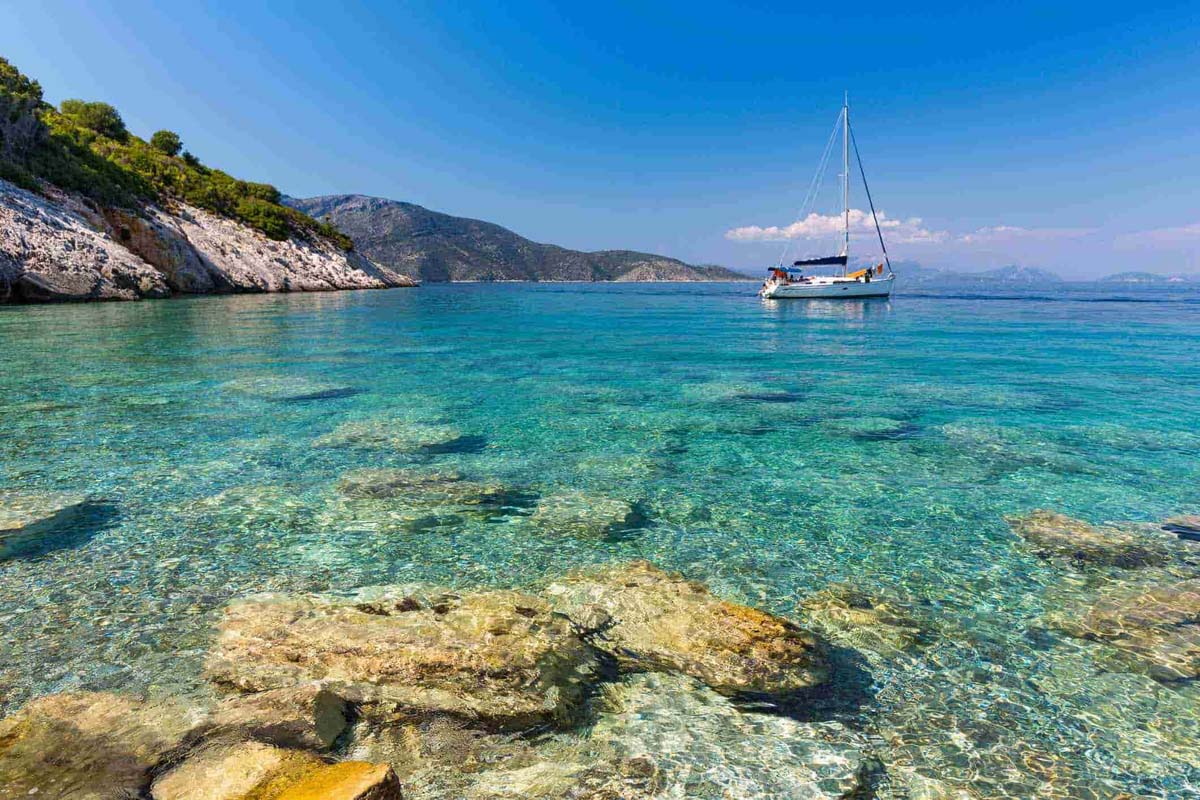
Day 5, Vathi (Ithaca) – Kalamos, 10 nautical miles
In what the Greeks call the “inner sea,” the stretch of the Ionian Sea between the Greek mainland and the islands of Lefkada, Cephalonia, and Zakynthos, lies the island of Kalamos — a simple, timeless place with lush and beautiful nature, characterized by extensive pine and eucalyptus groves. The island rises nearly 800 meters above sea level and is easily recognizable when approaching by boat. At the harbor entrance, caution is needed due to shallow waters and a few rocks. The marina offers about 30 berths with depths of 2.5–3.5 meters.
Unfortunately, there are no services except for a taverna where visitors can enjoy local delicacies. Since Kalamos harbor tends to fill up quickly in summer, there are two alternative anchorages. The first is the small harbor of Episkopi on the northern side of the island, which has space for only 5–6 boats and is suitable only in calm seas and no wind. The other alternative is Porto Leone, which was once the island’s main harbor but was abandoned after the 1953 earthquake.
Kalamos still retains an authentic atmosphere. Its coastline is dotted with many small coves, mostly pebbly and often accessible only by sea. As for beaches, near the harbor are Myrtia and Asproyiali, while further south are Agriapidia, Pefkoi, and Kefali, with Kedros, Alexaki, Kipoi, and Trachilos to the west. The island also has some interesting caves. The village of Kalamos has a supermarket, tavernas, a few bars, and just one souvenir shop. Meanwhile, the other settlement on the island, Episkopi, on the northwest coast, hides the well-preserved ruins of a Venetian castle.
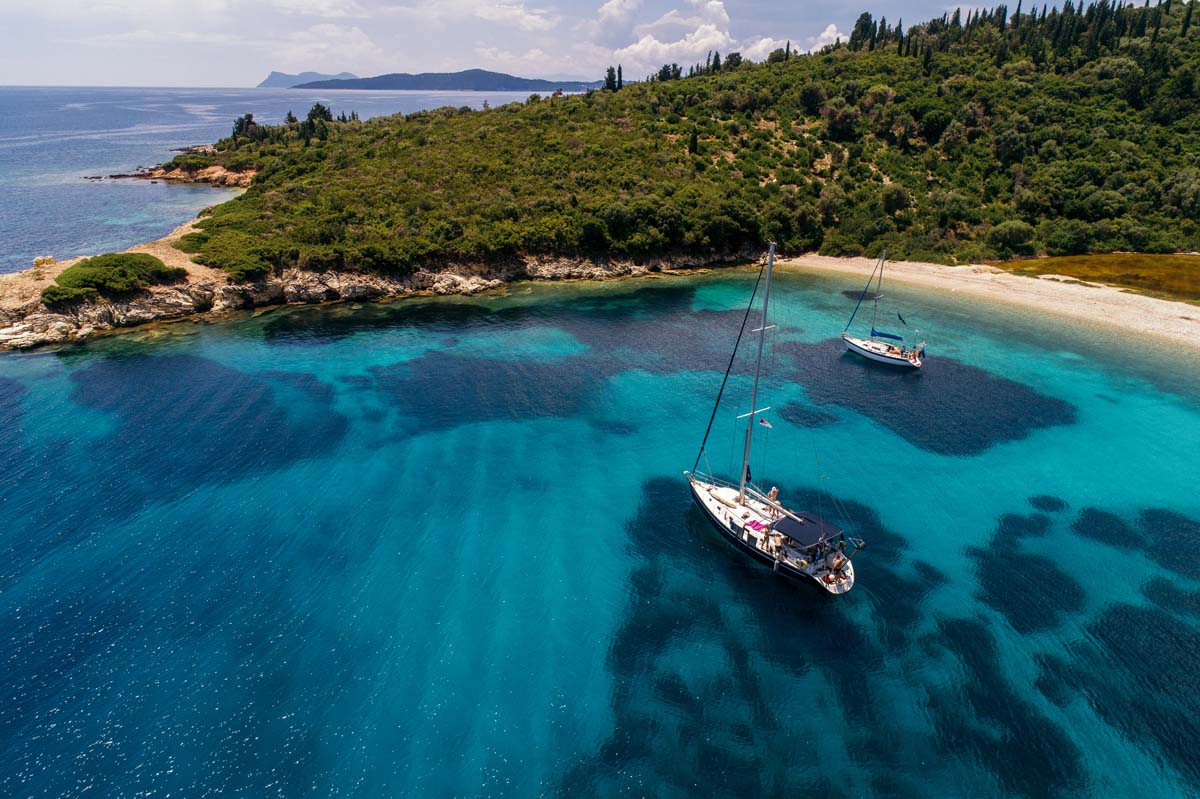
Day 6, Kalamos – Port Atheni (Meganisi), 10.5 nautical miles
We set sail once again to reach Port Atheni, a small harbor on the beautiful island of Meganisi, a place with limited tourist development and still unspoiled nature. The few inhabitants are concentrated in the northern part of the island, while the southern coast is famous for a couple of caves not to be missed. The first is the Papanikoli Cave, named after the Greek submarine of the same name that hid here during World War II. The cave is 30 meters deep and even features a small sandy beach, accessible only by sea. The other is the Cyclops Cave, which, according to legend, was home to the Cyclops Polyphemus, whom Odysseus blinded to save his own life and that of his companions.
The island is also home to numerous churches. Those of Saint Nicholas, Saint Constantine, and Saint Helena are all located in the village of Katomeri, while the Monastery of Saint John the Baptist is situated on the opposite, western side of the island. Many windmills, blending seamlessly into the island’s landscape, can also be found. The most popular beaches are Agios Ioannis, Fanari, Spilia, and Barbarezou.
Day 7, Port Atheni (Meganisi) – Palairos, 8 nautical miles
All that remains is to sail back to our starting base in Palairos, concluding our Ionian Greece cruise with the satisfaction of having explored one of the most beautiful areas of the Mediterranean and perhaps the desire to return to complete the exploration of these places — steeped in myth and rich in history, simple and authentic, where the deep values of Greek culture are still clearly visible.
You May Also Like
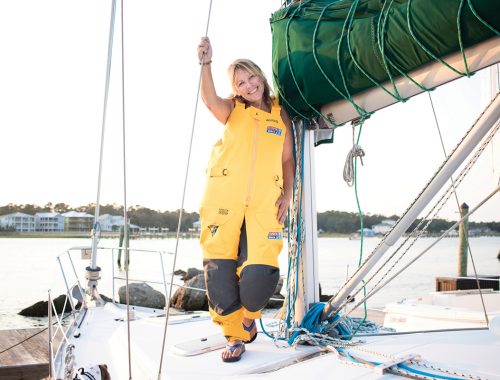
Women today love boats and sailing cruises like men
02/03/2022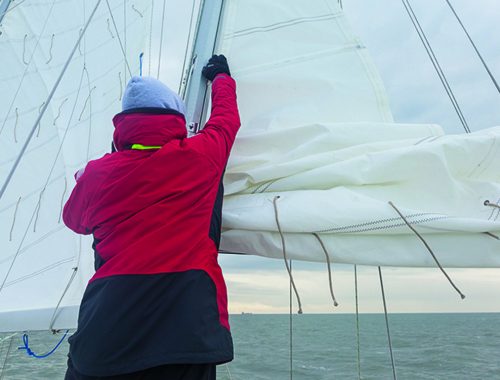
Raising and lowering the mainsail: Troubleshooting
19/11/2025